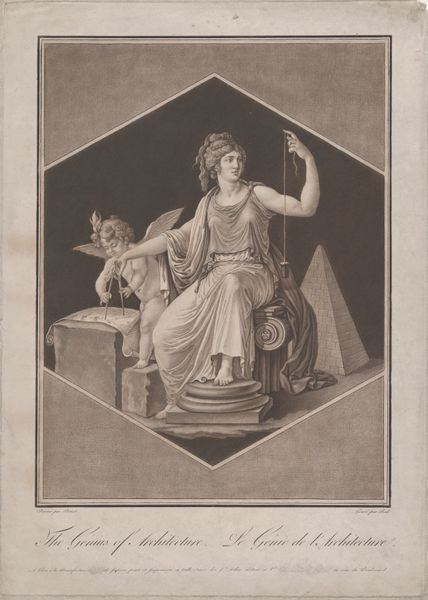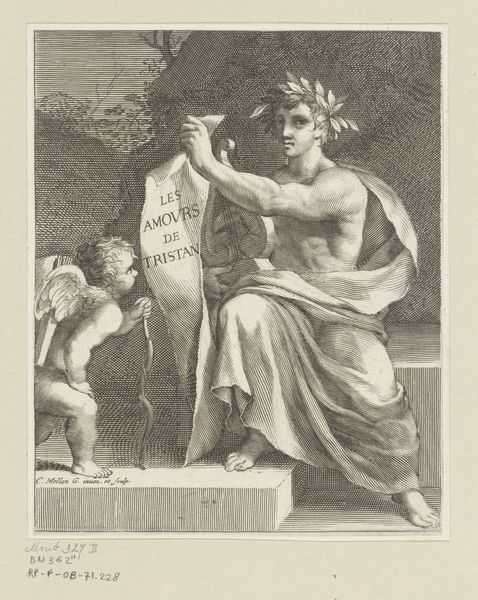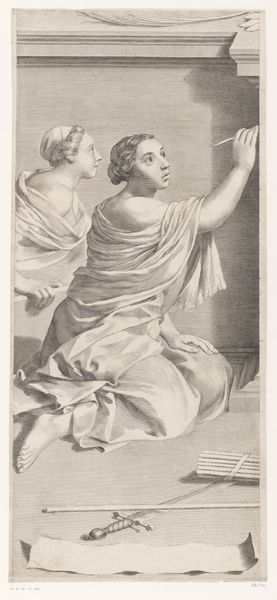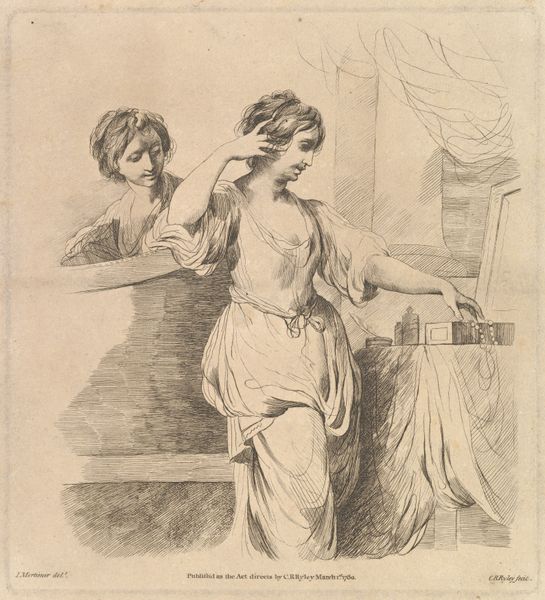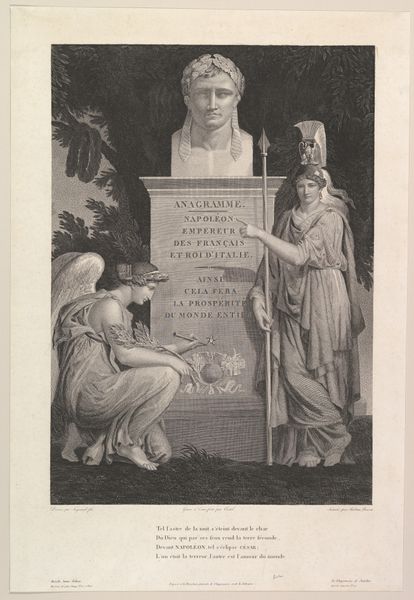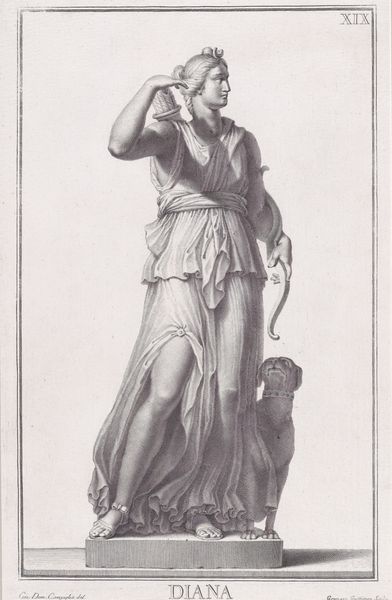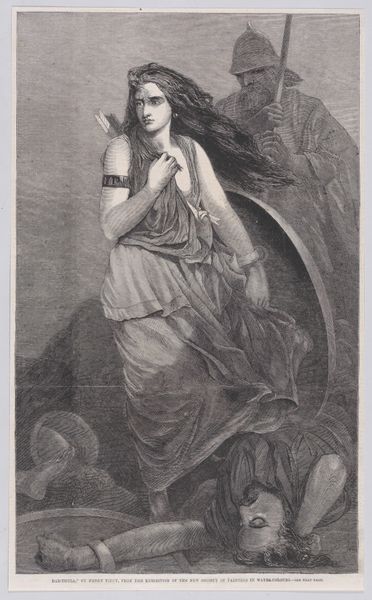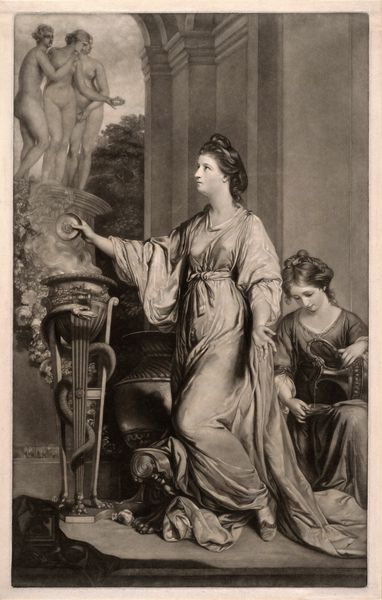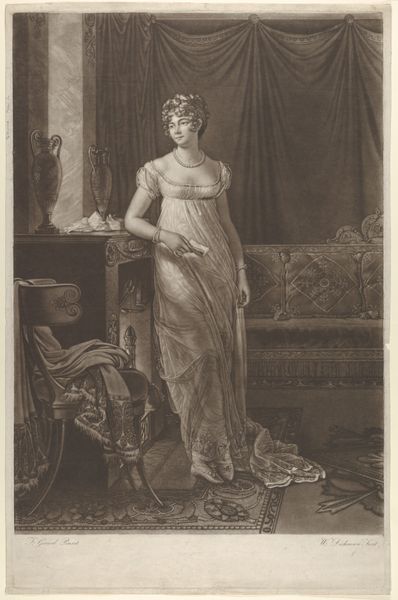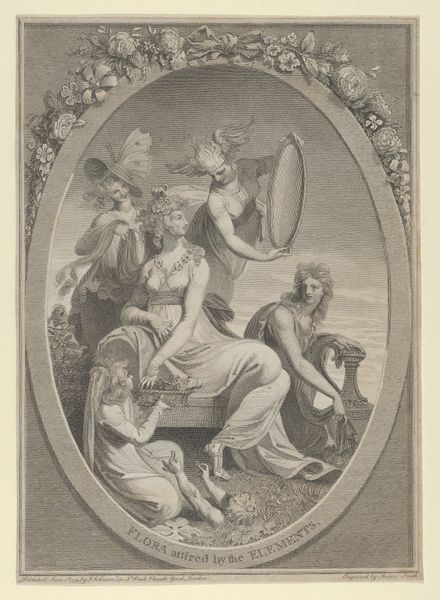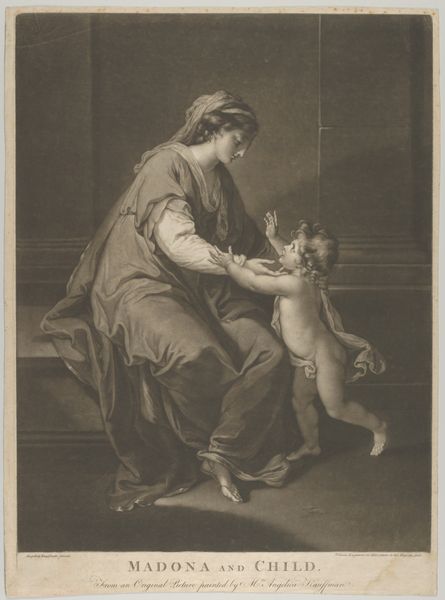
drawing, print
#
portrait
#
drawing
#
religious cultural
#
neoclassicism
# print
#
figuration
#
child
#
19th century
#
men
#
genre-painting
#
academic-art
Dimensions: Image: 10 7/16 × 7 5/8 in. (26.5 × 19.4 cm) Sheet: 17 in. × 11 11/16 in. (43.2 × 29.7 cm)
Copyright: Public Domain
Curator: Oh, this is charming! We’re looking at Amos Cassioli's print "Come and Get It," created in 1878, now held at the Metropolitan Museum of Art. The title is just as inviting as the scene suggests. Editor: Immediately, I’m struck by the overall mood. It feels tender, domestic, but also tinged with a kind of classical serenity, almost staged. It has an Arcadian dreaminess to it. Curator: Staged is a good way to describe it, as it adheres to the conventions of academic art prevalent at the time, but look closely at the figures. The woman’s garments and her elaborate hairstyle hark back to idealized antiquity. Neoclassicism's revival of virtues feels apparent, it's both genre-painting and something elevated. Editor: Precisely. And see how her posture invites participation? The jewelry, too – not merely decoration, but perhaps symbolic of status and maternal abundance. Note the bauble in her hand and the suspended toy – perhaps it's the artist suggesting a moment of decision, drawing the viewer in and making one curious. Curator: I see it more broadly, how public and private spheres begin to intertwine. Artists like Cassioli aimed to elevate scenes of everyday life through the lens of history and morality, reflecting and perhaps reinforcing societal expectations regarding motherhood. Genre-painting in this case almost works as a social study. Editor: I wonder, too, if it whispers of the ephemeral nature of childhood, of play, and the fleeting beauty of youth, something almost maternal. These elements really amplify its accessibility; however consciously so. Curator: It's a lovely example of how art serves both to mirror and mold our understanding of the world, framing how certain virtues, like those of family, became associated with certain eras or historical periods. Editor: True. Exploring these prints allows us to reflect not just on what the artist presents but on how our culture shapes what we value visually, especially these days.
Comments
No comments
Be the first to comment and join the conversation on the ultimate creative platform.
